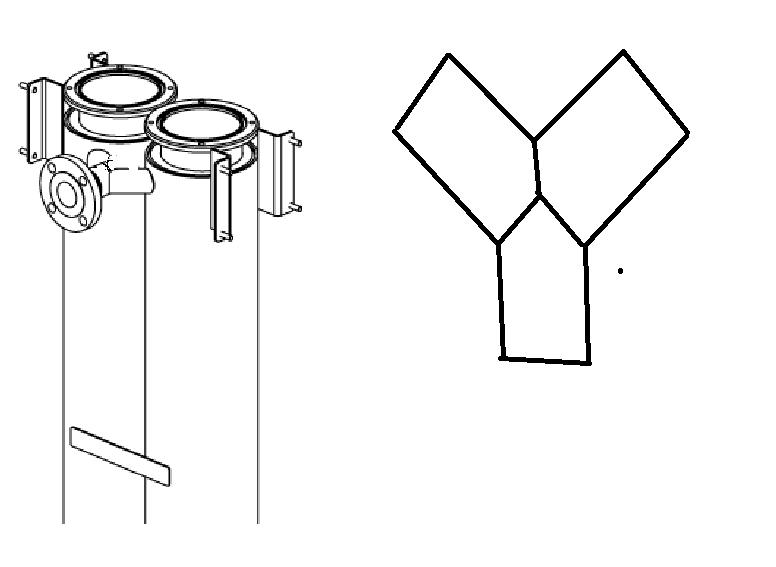Navigation
Install the app
How to install the app on iOS
Follow along with the video below to see how to install our site as a web app on your home screen.
Note: This feature may not be available in some browsers.
More options
Style variation
-
Congratulations TugboatEng on being selected by the Eng-Tips community for having the most helpful posts in the forums last week. Way to Go!
You are using an out of date browser. It may not display this or other websites correctly.
You should upgrade or use an alternative browser.
You should upgrade or use an alternative browser.
Nozzle Design Calculation
- Thread starter CSunny
- Start date
- Status
- Not open for further replies.
- Thread starter
- #7
As it is with the Y connection there will not be any flexibility between the vessels.
In case one vessel moves differentially then the other one the Y nozzle will be overloaded/overstressed, and perhaps will fail. As it is the supports are opposing each other, vessels will grow towards each other under thermal load and this will create additional bending stresses on Y legs. In case the system is not small and identically supported I would suggest to create loop which includes a T connection with flange as suggested. Everything depends on the thermal loading, if any in the system, differential expansion/contraction and the supporting system.
In case one vessel moves differentially then the other one the Y nozzle will be overloaded/overstressed, and perhaps will fail. As it is the supports are opposing each other, vessels will grow towards each other under thermal load and this will create additional bending stresses on Y legs. In case the system is not small and identically supported I would suggest to create loop which includes a T connection with flange as suggested. Everything depends on the thermal loading, if any in the system, differential expansion/contraction and the supporting system.
- Thread starter
- #13
- Thread starter
- #15
Here is a paper from the old days, it might be useful, might not, you might have to pay for it, might not...
I'd have to think there would be something, somwhere.
The problem with sloppy work is that the supply FAR EXCEEDS the demand
I'd have to think there would be something, somwhere.
The problem with sloppy work is that the supply FAR EXCEEDS the demand
A solution is CC202. It may imply you have to use a casting or forging, but hey, if you need to comply with B31.3, at least you have an option that (to me) sounds better than FEA or burst testing. Why take all the hassle of 304.7.2?
Huub
- You never get what you expect, you only get what you inspect.
Huub
- You never get what you expect, you only get what you inspect.
- Status
- Not open for further replies.
Similar threads
- Replies
- 14
- Views
- 15K
- Replies
- 2
- Views
- 9K
- Replies
- 7
- Views
- 11K
- Replies
- 5
- Views
- 3K

